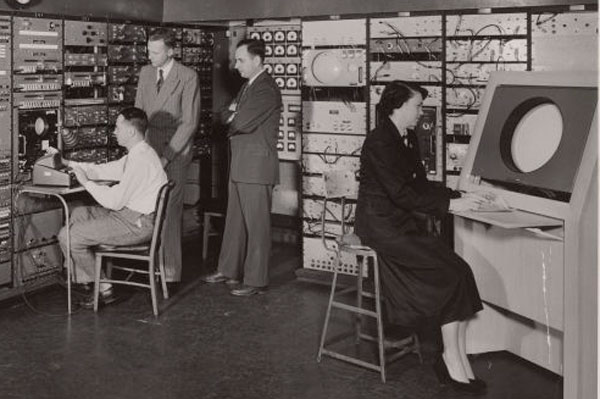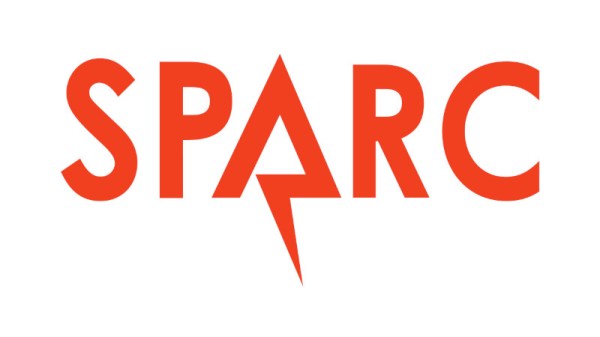We noted that Excel turned 40 this year. That makes it seem old, and today, if you say “spreadsheet,” there’s a good chance you are talking about an Excel spreadsheet, and if not, at least a program that can read and produce Excel-compatible sheets. But we remember a time when there was no Excel. But there were still spreadsheets. How far back do they go? Continue reading “A Brief History Of The Spreadsheet”
computer history21 Articles
Hackaday Links: November 9, 2025
We’re always a wee bit suspicious about articles that announce some sort of “World’s first” accomplishment. With a couple of hundred thousand years of history, most of which wasn’t recorded, over which something like 117 billion humans have lived, any claims of primacy have to be taken with a grain of salt. So when the story of the world’s first instance of a car being hit by a meteorite came across our feed, we had to check it out. The car in question, a Tesla, was being driven in South Australia by veterinarian Andrew Melville-Smith when something suddenly crashed into its windshield.
Remembering Chiptunes, The Demoscene And The Illegal Music Of Keygens
We loved keygens back in the day. Our lawyers advise us to clarify that it’s because of the demo-scene style music embedded in them, not because we used them for piracy. [Patch] must feel the same way, as he has a lovely historical retrospective out on “The Internet’s Most Illegal Music” (embedded below).
After defining what he’s talking about for the younger set, who may never have seen a keygen in this degenerate era of software-by-subscription, [Patch] traces the history of the jaunty chiptunes that were so often embedded in this genre of program. He starts with the early demoscene and its relationship with cracker groups — those are coders who circulate “cracked” versions of games, with the copyright protection removed. In the old days, they’d embed an extra loading screen to take credit for the dastardly deeds that our lawyer says to disavow.
Continue reading “Remembering Chiptunes, The Demoscene And The Illegal Music Of Keygens”
An Emulated Stroll Down Macintosh Memory Lane
If you’re into Macs, you’ll always remember your first. Maybe it was the revolutionary classic of 1984 fame, perhaps it was the adorable G3 iMac in 1998, or even a shiny OS X machine in the 21st century. Whichever it is, you’ll find it emulated in [Marcin Wichary]’s essay “Frame of preference: A history of Mac settings, 1984–2004” — an exploration of the control panel and its history.

[Marcin] is a UI designer as well as an engineer and tech historian, and his UI chops come out in full force, commenting and critiquing Curputino’s coercions. The writing is excellent, as you’d expect from the man who wrote the book on keyboards, and it provides a fascinating look at the world of retrocomputing through the eyes of a designer. That design-focused outlook is very apropos for Apple in particular. (And NeXT, of course, because you can’t tell the story of Apple without it.)
There are ten emulators on the page, provided by [Mihai Parparita] of Infinite Mac. It’s like a virtual museum with a particularly knowledgeable tour guide — and it’s a blast, getting to feel hands-on, the design changes being discussed. There’s a certain amount of gamification, with each system having suggested tasks and a completion score when you finish reading. There are even Easter eggs.
This is everything we wish the modern web was like: the passionate deep-dives of personal sites on the Old Web, but enhanced and enabled by modern technology. If you’re missing those vintage Mac days and don’t want to explore them in browser, you can 3D print your own full-size replica, or a doll-sized picoMac.
Aiken’s Secret Computing Machines
This neat video from the [Computer History Archives Project] documents the development of the Aiken Mark I through Mark IV computers. Partly shrouded in the secrecy of World War II and the Manhattan Project effort, the Mark I, “Harvard’s Robot Super Brain”, was built and donated by IBM, and marked their entry into what we would now call the computer industry.
Numerous computing luminaries used the Mark I, aside from its designer Howard Aiken. Grace Hopper, Richard Bloch, and even John von Neumann all used the machine. It was an electromechanical computer, using gears, punch tape, relays, and a five horsepower motor to keep it all running in sync. If you want to dig into how it actually worked, the deliciously named patent “Calculator” goes into some detail.
The video goes on to tell the story of Aiken’s various computers, the rift between Harvard and IBM, and the transition of computation from mechanical to electronic. If this is computer history that you don’t know, it’s well worth a watch. (And let us know if you also think that they’re using computer-generated speech to narrate it.)
If “modern” computer history is more your speed, check out this documentary about ENIAC.
Debugging A 1950s Computer Sounds Like A Pain
Debugging computers in the 1950s sounds like it wasn’t an easy task. That’s one of the interesting facts from this fascinating talk by [Guy Fedorkow] about the Whirlwind, one of the first digital computers ever built. The development of this remarkable computer started at MIT (Funded by the US Navy) in 1949 as a flight simulator but pivoted to plotting interceptions in the early 1950s. That was because the USSR had just set off their first boosted nuclear bomb, which could be mounted on a missile or bomber. So, the threat of incoming missiles and atomic bombers became real, and the need arose to intercept nuclear bombers.
As a real-time computer, Whirlwind received radar data from radar stations around the US that showed the location of the interceptor and the incoming bogey, then calculated the vector for the two to meet up and, erm, have a frank exchange of views. So, how do you debug one of the first real-time computers? Carefully, it seems.
Continue reading “Debugging A 1950s Computer Sounds Like A Pain”
History Of The SPARC CPU Architecture
[RetroBytes] nicely presents the curious history of the SPARC processor architecture. SPARC, short for Scalable Processor Architecture, defined some of the most commercially successful RISC processors during the 1980s and 1990s. SPARC was initially developed by Sun Microsystems, which most of us associate the SPARC but while most computer architectures are controlled by a single company, SPARC was championed by dozens of players. The history of SPARC is not simply the history of Sun.
A Reduced Instruction Set Computer (RISC) design is based on an Instruction Set Architecture (ISA) that runs a limited number of simpler instructions than a Complex Instruction Set Computer (CISC) based on an ISA that comprises more, and more complex, instructions. With RISC leveraging simpler instructions, it generally requires a longer sequence of those simple instructions to complete the same task as fewer complex instructions in a CISC computer. The trade-off being the simple (more efficient) RISC instructions are usually run faster (at a higher clock rate) and in a highly pipelined fashion. Our overview of the modern ISA battles presents how the days of CISC are essentially over. Continue reading “History Of The SPARC CPU Architecture”

















